Special Report
Places Where Your Visit Could Double the Population
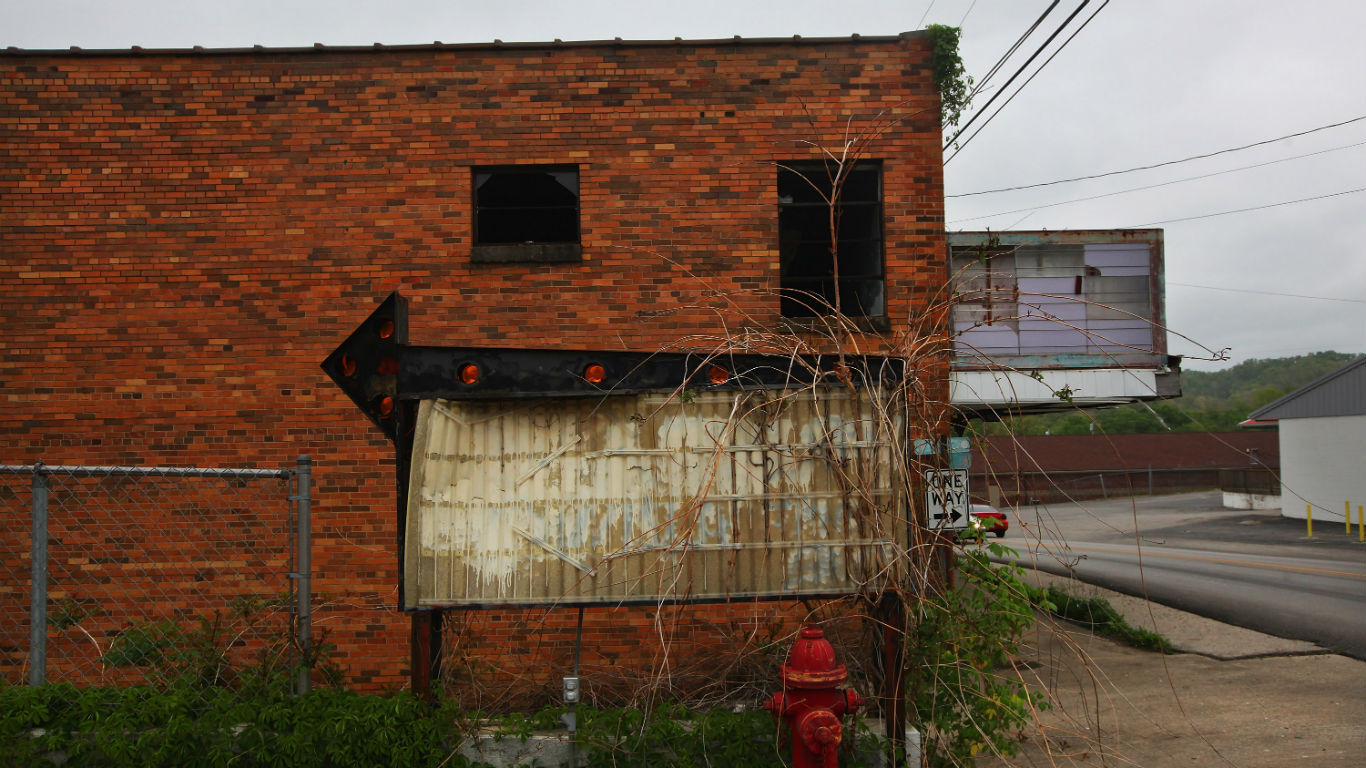
Published:
Last Updated:

It may be stifling living in a small town where everybody knows your name, but imagine living in a town so small you’re the only resident.
Using decennial census data, 24/7 Tempo compiled the smallest incorporated towns and census-designated places in the country; places where your visit could very well double the population. It’s a dream for some, to be surrounded by peace and quiet, but maybe not for the folks left in dying communities like these American ghost towns who’ve watched all their neighbors pack up and move on, leaving their houses to crumble.
Many of these towns were founded on railroad routes around the turn of the 20th century, when farming or mining were booming in the area. Those communities began to dissolve when the Great Depression and the Dust Bowl hit, and residents moved to find jobs.
Further tragedy struck when the modern railroad system reached the end of its glory, and by 1980, many of these towns had populations under 20. Now, a few have barely enough people to maintain incorporated status. In fact, in nearly every state in the country there is at least one county or county equivalent where the overall population has significantly declined — these are the fastest-shrinking counties in America.
Although the populations are small, these towns still possess a charm and sense of home for the residents and visitors who come to have a drink at the bar, or bars, see the tourist attractions, or just photograph the gorgeous landscapes and abandoned buildings.
Click here to read about the places where your visit could double the population.
To compile the places where your visit could double the population, 24/7 Tempo utilized the U.S. Census Bureau’s 2010 Decennial Census data, including estimated populations in 2000. Town boundaries and population figures may have changed since the 2010 census. Only incorporated towns and census-designated places were included.
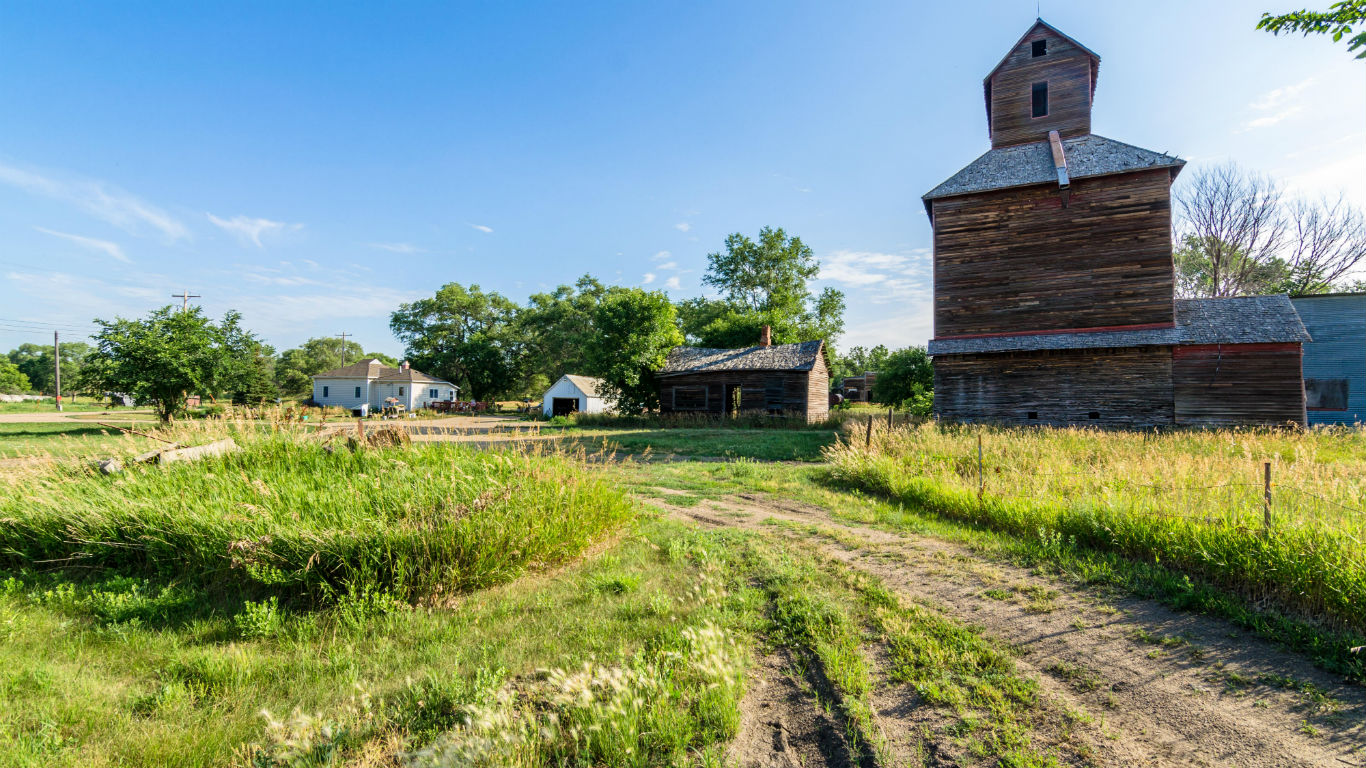
1. Anoka, Nebraska
> Estimated population (2010): 6
> Estimated population (2000): 10
Just three miles from Butte, Nebraska, a town of about 330, is the old railroad town of Anoka. Formed in 1903, the village had grown to 30 businesses by 1905 and even had a mineral hot spring in 1907. As rail traffic declined, the town shrank, leaving just six residents by 2010. It’s one of only two towns in Boyd County that doesn’t sit along the main thoroughfare, State Highway 12.
[in-text-ad]
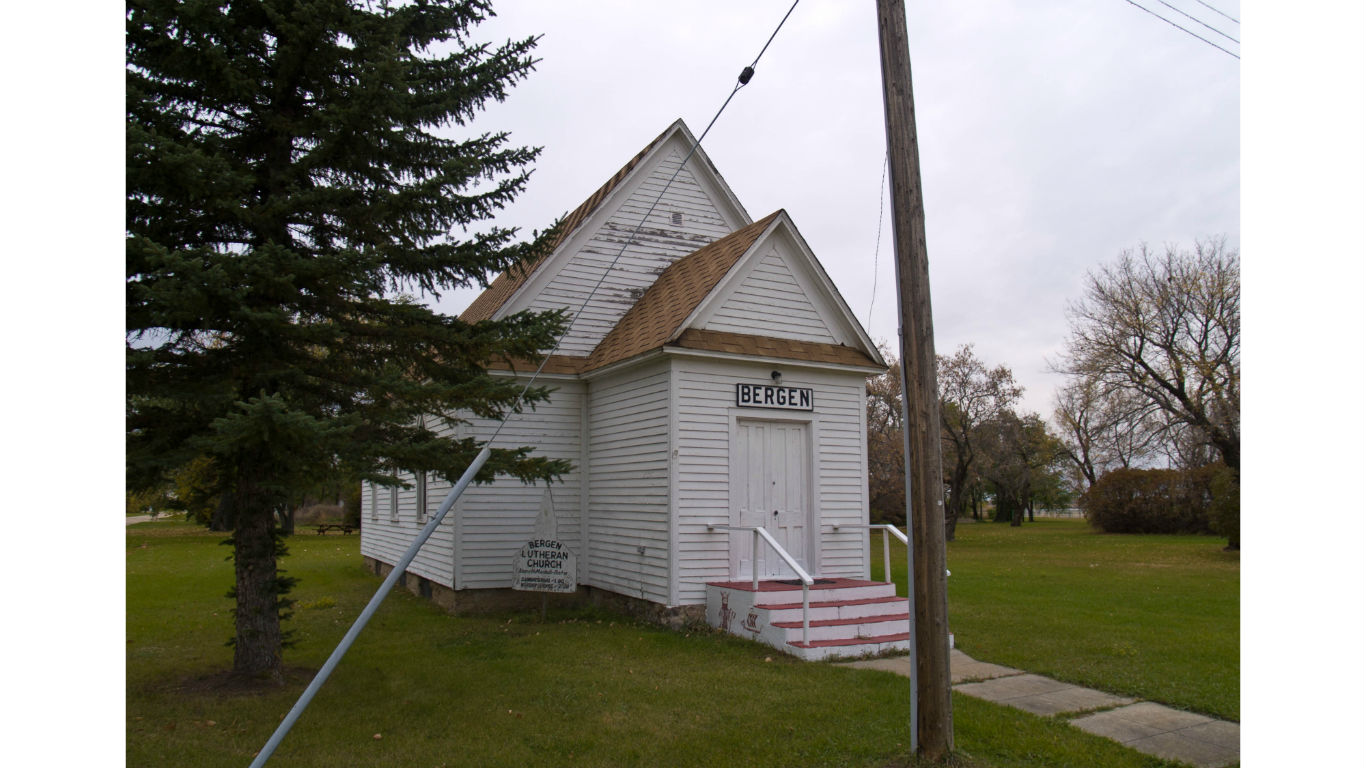
2. Bergen, North Dakota
> Estimated population (2010): 7
> Estimated population (2000): 11
Bergen, North Dakota, lies about 30 miles southeast of the city of Minot, just off State Highway 52. A post office in 1905 put Bergen City on the map in preparation for the arrival of the railroad in 1907. By 1929 the town had incorporated, with a population of 98 the next year, though by 1960 it had fallen to 52 and by 1970 there were only 24 reported residents.
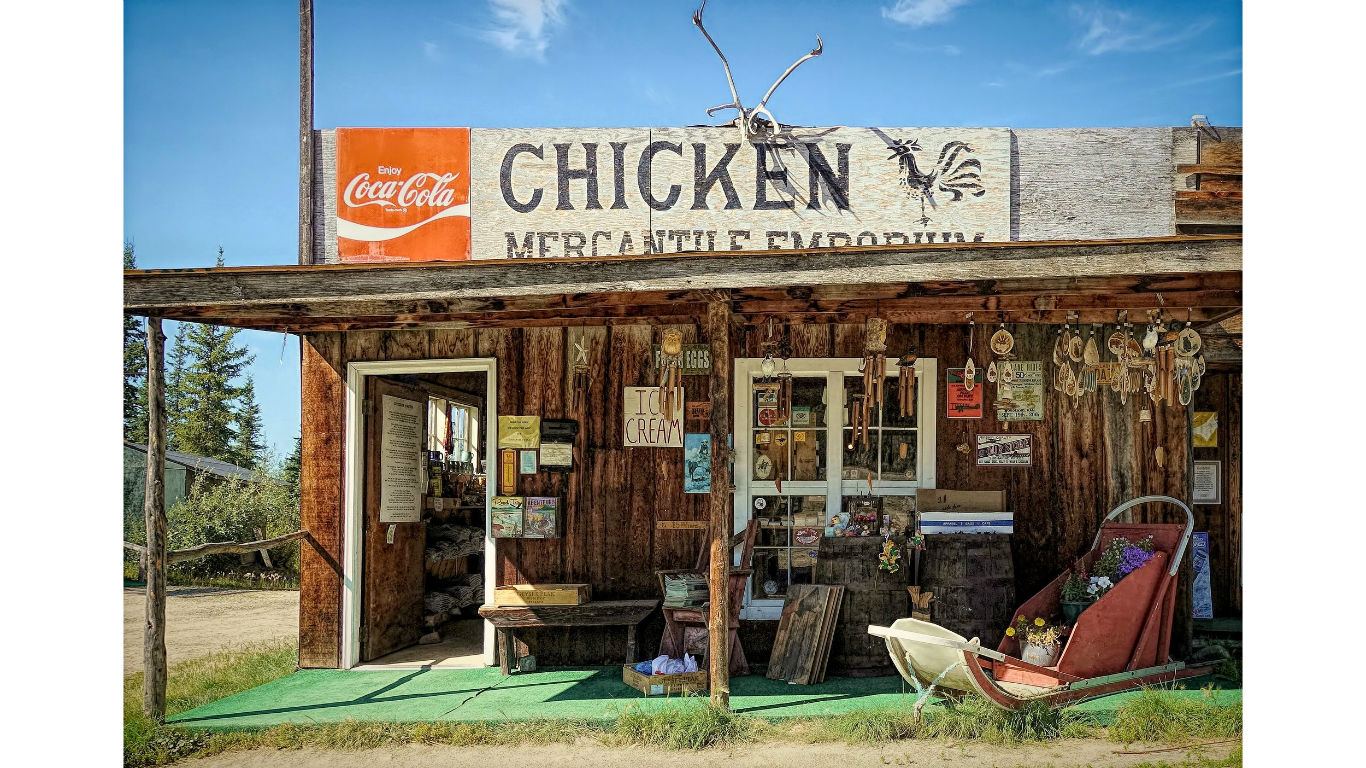
3. Chicken CDP, Alaska
> Estimated population (2010): 7
> Estimated population (2000): 17
One of the few surviving gold rush towns in Alaska, Chicken lies on a mountainous, seasonally maintained gravel highway near the state’s border with the Yukon Territory, in what is called the Fortymile gold mining district. There are still active gold claims in the area as well as guided tours of the historic town.
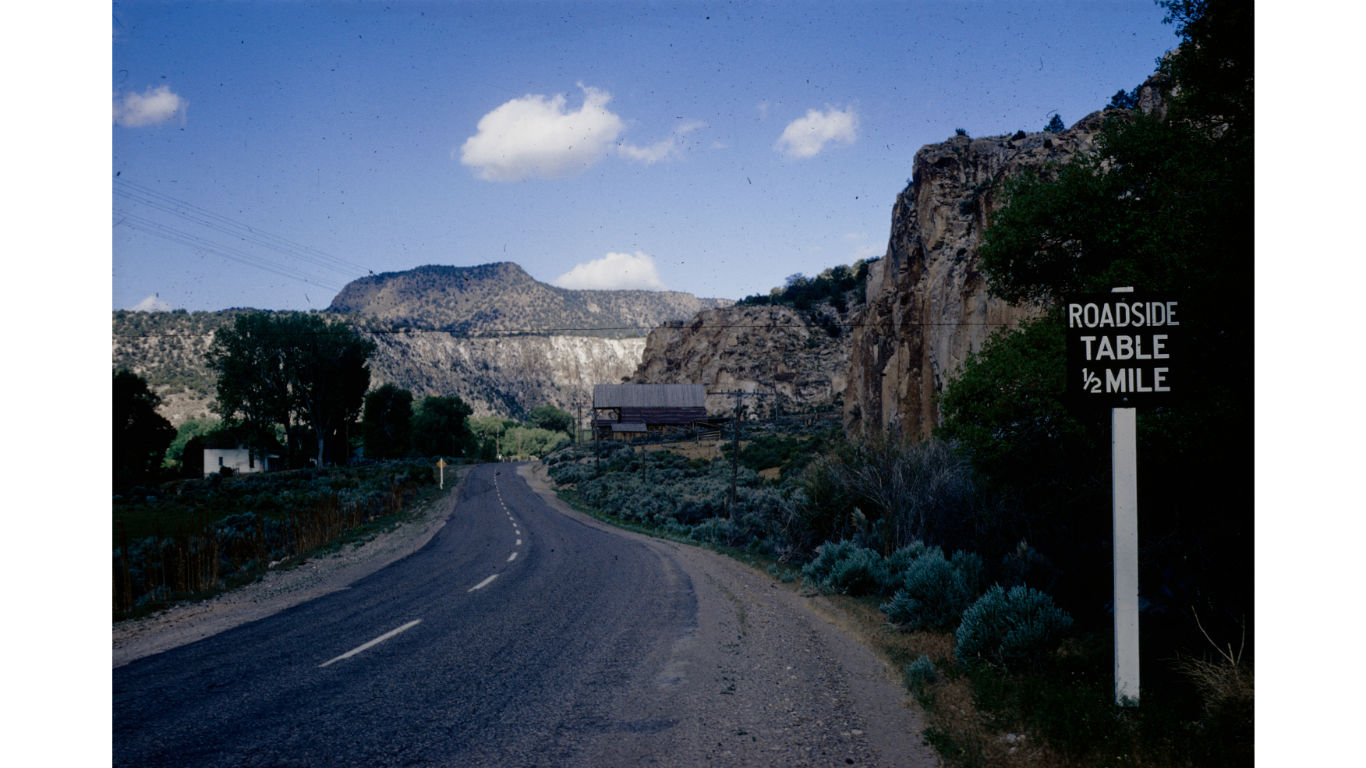
4. Clear Creek CDP, Utah
> Estimated population (2010): 4
> Estimated population (2000): Not available
Clear Creek, Utah lies in the canyonlands just outside of the Manti-La Sal National Forest at an elevation over 8,000 feet. Founded in the 1870s as a logging camp, the town transformed into a coal mining village when coal was discovered under the settlement in 1898. Clear Creek’s population peaked at 600 residents between 1910 and 1920. As coal demand decreased, the mine began to slow in 1930 and cut production in 1955. The structures at Clear Creek are now home to a summer camp.
[in-text-ad-2]

5. Comobabi CDP, Arizona
> Estimated population (2010): 8
> Estimated population (2000): Not available
Located within the Tohono O’odham Nation Reservation near Arizona’s southern border, Comobabi lies in a desert mountain pass 20 miles from the Tohono Nation’s capital and largest city, Sells. The area is scattered with dozens of small gold and mineral mines, some that have been worked since the 1700s.
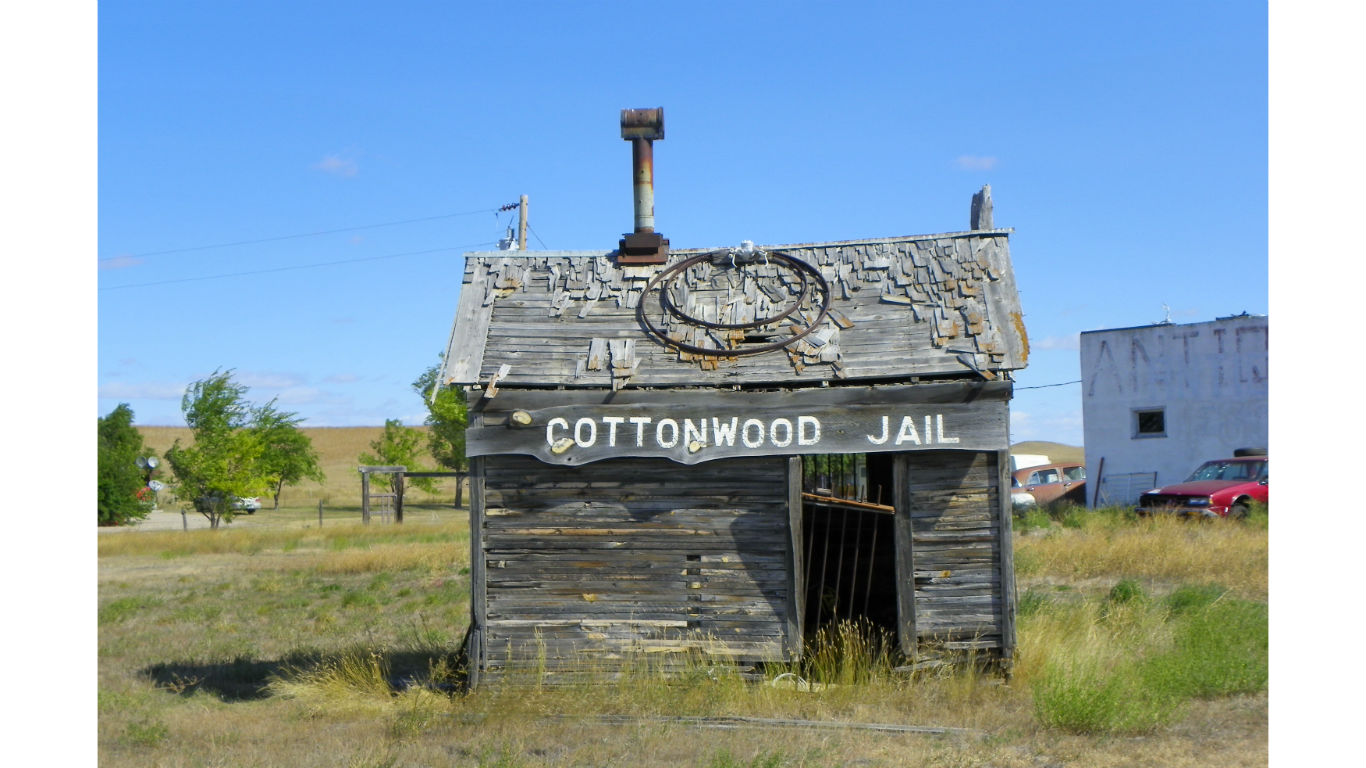
6. Cottonwood, South Dakota
> Estimated population (2010): 9
> Estimated population (2000): 6
About 15 miles from Interstate 90 and 70 miles from Rapid City, Cottonwood sits on State Highway 14 along a historic railroad line. Founded in the early 1900s, the town hit its peak population around 1930, shortly before the Dust Bowl drove many inhabitants off their farmland. By the ’50s Cottonwood’s school closed, and now there are no businesses left in town.
[in-text-ad]
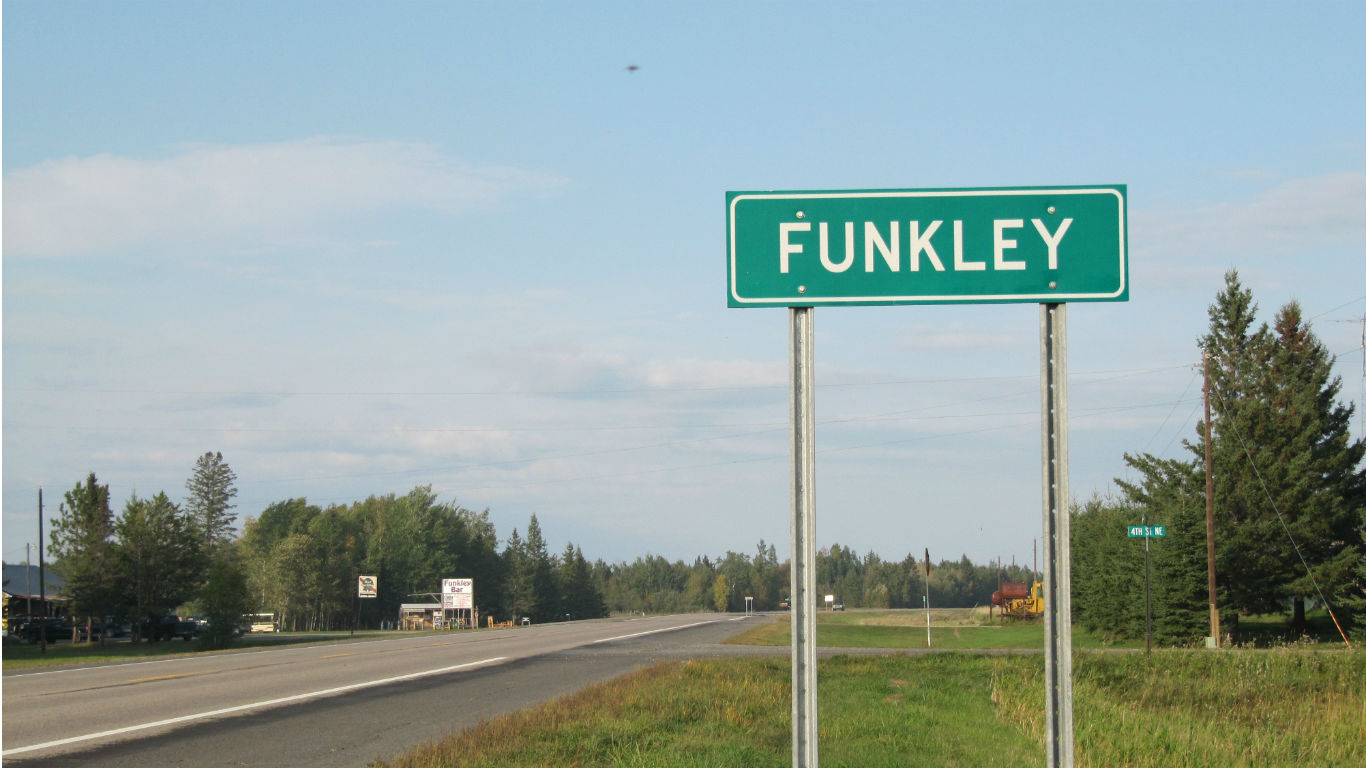
7. Funkley, Minnesota
> Estimated population (2010): 5
> Estimated population (2000): 15
With a peak population of 60 in 1930, just before the Great Depression, Funkley served as a railway junction town for the Minnesota and International Railway Station. There are reports of a family moving to town in 2013, which doubled the population to 11, though the town’s last business, a bar owned by the mayor, reportedly closed in 2017.
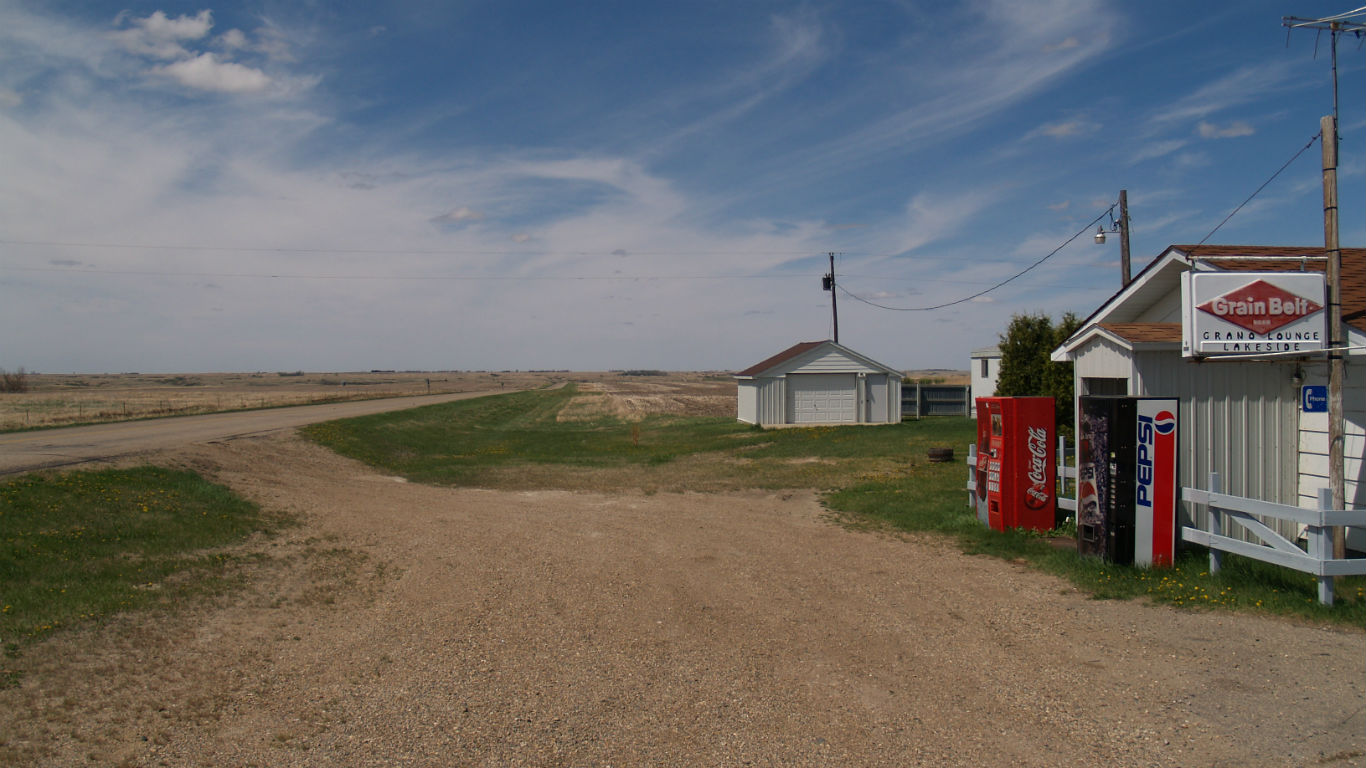
8. Grano, North Dakota
> Estimated population (2010): 7
> Estimated population (2000): 9
A railroad station town on the Soo line, Grano was founded in 1905 and incorporated in 1911, with its population peaking at 112 in 1920. Located just outside Lake Darling and the Upper Souris National Wildlife Refuge, the town has one bar that caters to tourists and fishermen, selling bait, food, and drinks.

9. Lakeside, Colorado
> Estimated population (2010): 8
> Estimated population (2000): 20
Compared to the dying railroad towns of the Great Plains states, Lakeside, Colorado may seem like a booming metropolis. Founded by a Denver area brewer in 1906, the tiny municipality’s sole purpose was to house the Lakeside Amusement Park out of the reach of Denver’s strict liquor laws. Located just northwest of Denver, this town abutting Interstate 70 consists of the still-operational amusement park, a Walmart, and a parkside lake, and is home to a few of the amusement park’s employees.
[in-text-ad-2]
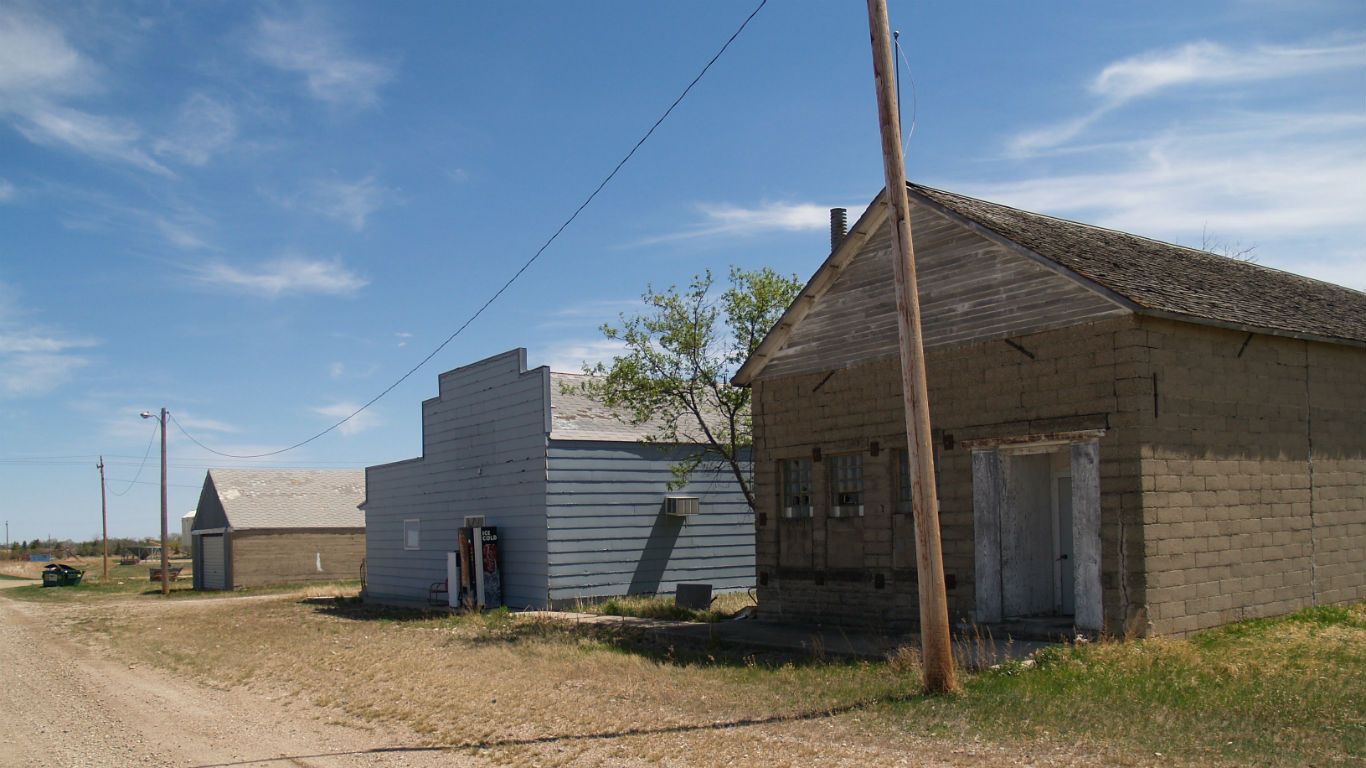
10. Loraine, North Dakota
> Estimated population (2010): 9
> Estimated population (2000): 19
Just 12 miles from the Canadian border, Loraine, North Dakota is a small town tucked in amongst large swaths of farmland. The population peaked around 1930 at 92, and steadily fell each decade, reaching 21 residents in 1980. In 2015, a restaurant and bar opened in town, attracting customers from miles around, even some who come by two-seater plane.
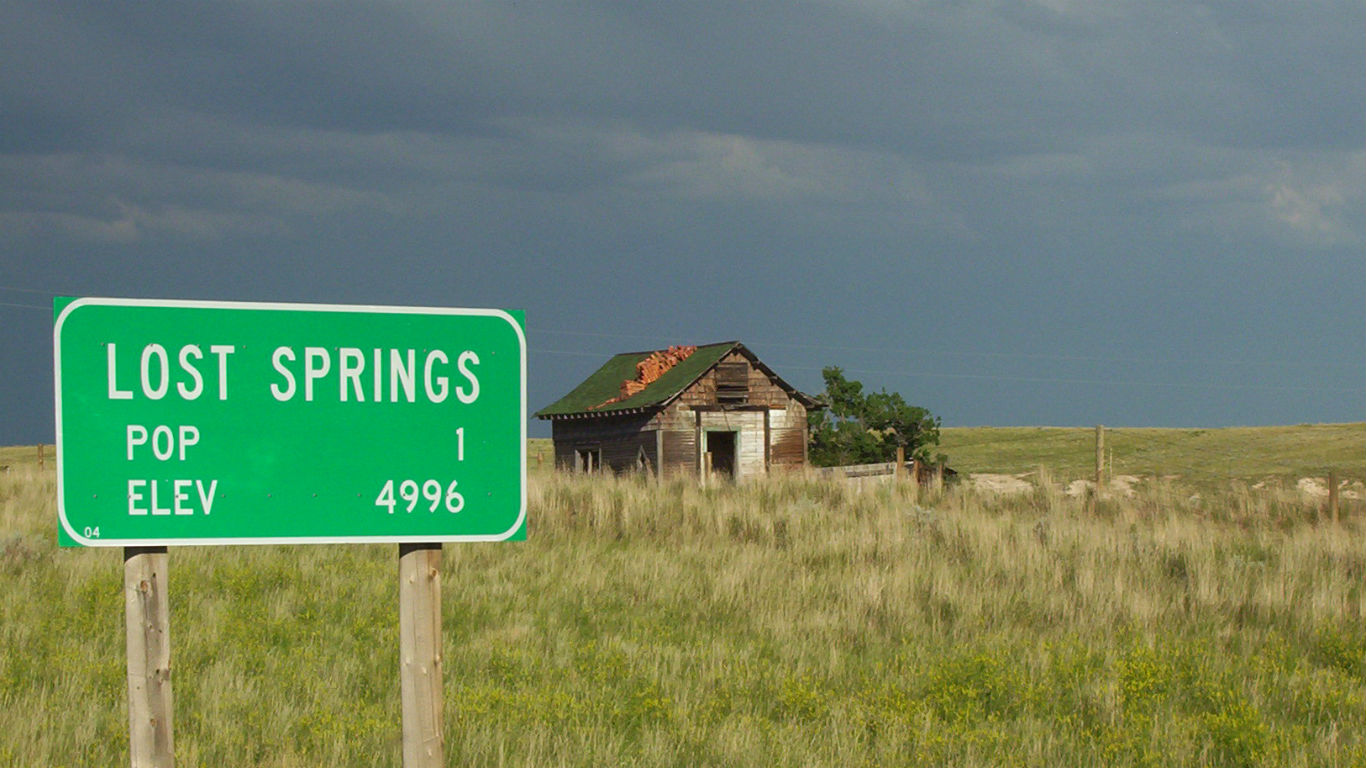
11. Lost Springs, Wyoming
> Estimated population (2010): 4
> Estimated population (2000): 1
Around the turn of the century, Lost Springs was home to a coal company, a railroad stop, a lumber yard, and many farmers and businesses. The mine closed in the 1930s and the railroad to the mines was abandoned. Now, Lost Springs, which is just 17 miles from I-25 on State Highway 20, still has a post office connected to a general store and a bar.
[in-text-ad]

12. Perth, North Dakota
> Estimated population (2010): 9
> Estimated population (2000): 13
The city of Perth, North Dakota takes up just 0.13 square miles in the middle of grain farming country and is home to the North Central Grain Co-op. As in many North Dakota towns, the Perth population has been steadily declining since the Dust Bowl in the 1930’s, from 218 residents in 1920 to 20 residents in 1980.
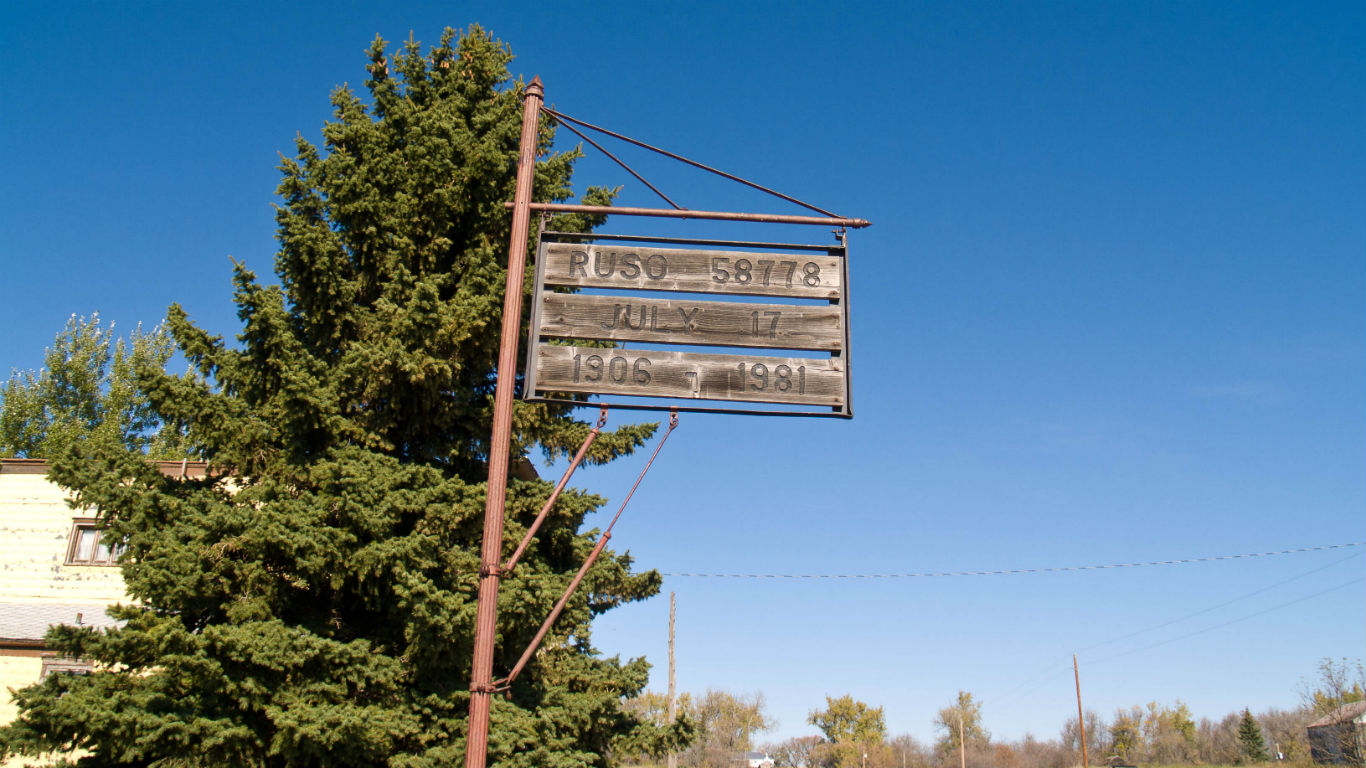
13. Ruso, North Dakota
> Estimated population (2010): 4
> Estimated population (2000): 6
This stop on the Soo Line Railroad was a bustling town, incorporated in 1909, with a population of 141 in 1910. When the town’s mayor died in 2018, the population dropped to two and the town was on the verge of dissolving, as North Dakota codes require a minimum of three residents for incorporation. Luckily, a resident of nearby Velva who was building a house in Ruso stepped up to become the new mayor, and with his wife, brought the population back to four.
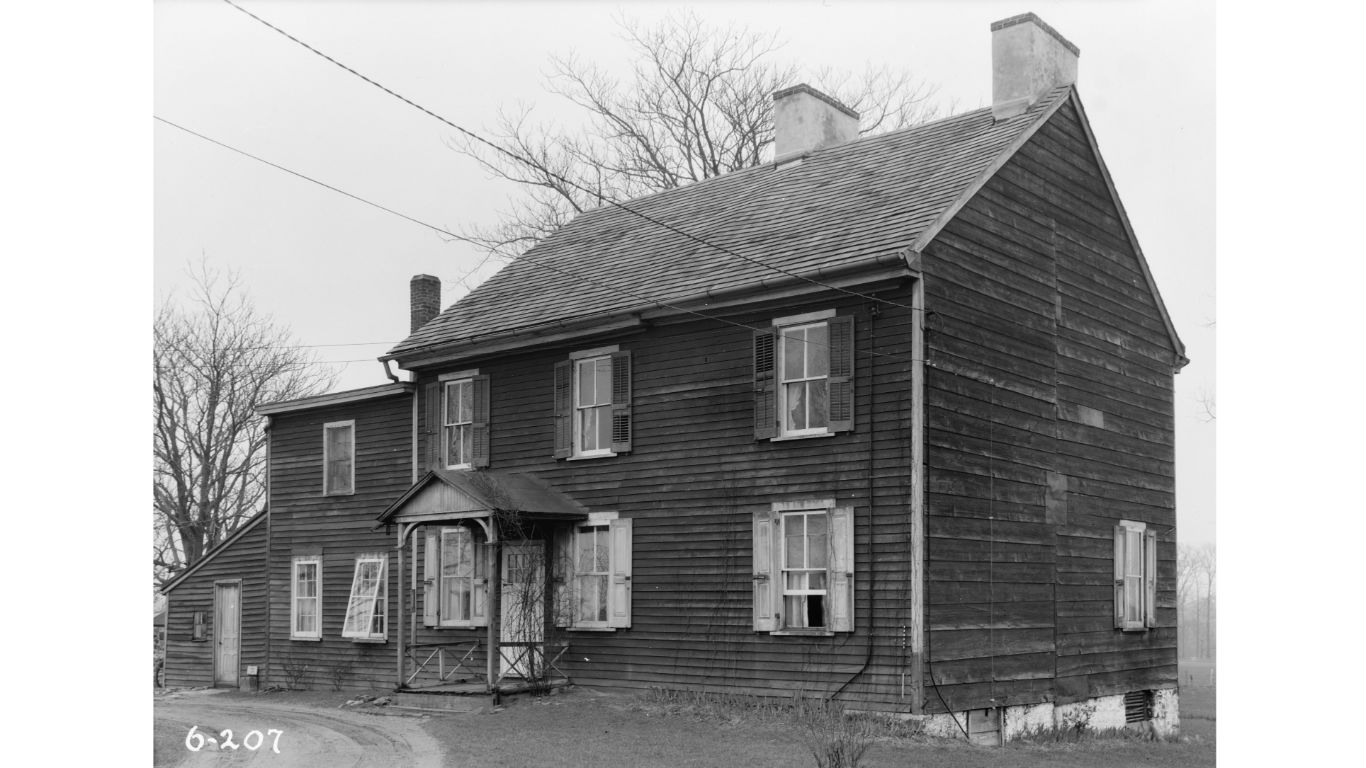
14. Tavistock borough, New Jersey
> Estimated population (2010): 5
> Estimated population (2000): 24
About 15 miles from Philadelphia in Camden County, New Jersey, Tavistock Township consists of a private country club and three abutting multi-million dollar residences. The township was incorporated in 1921 for the sole purpose of allowing members of the Tavistock Country Club to play golf on Sundays, which was prohibited at the nearby Haddon Country Club, as it was located in a dry borough with strict rules around sports and alcohol.
[in-text-ad-2]
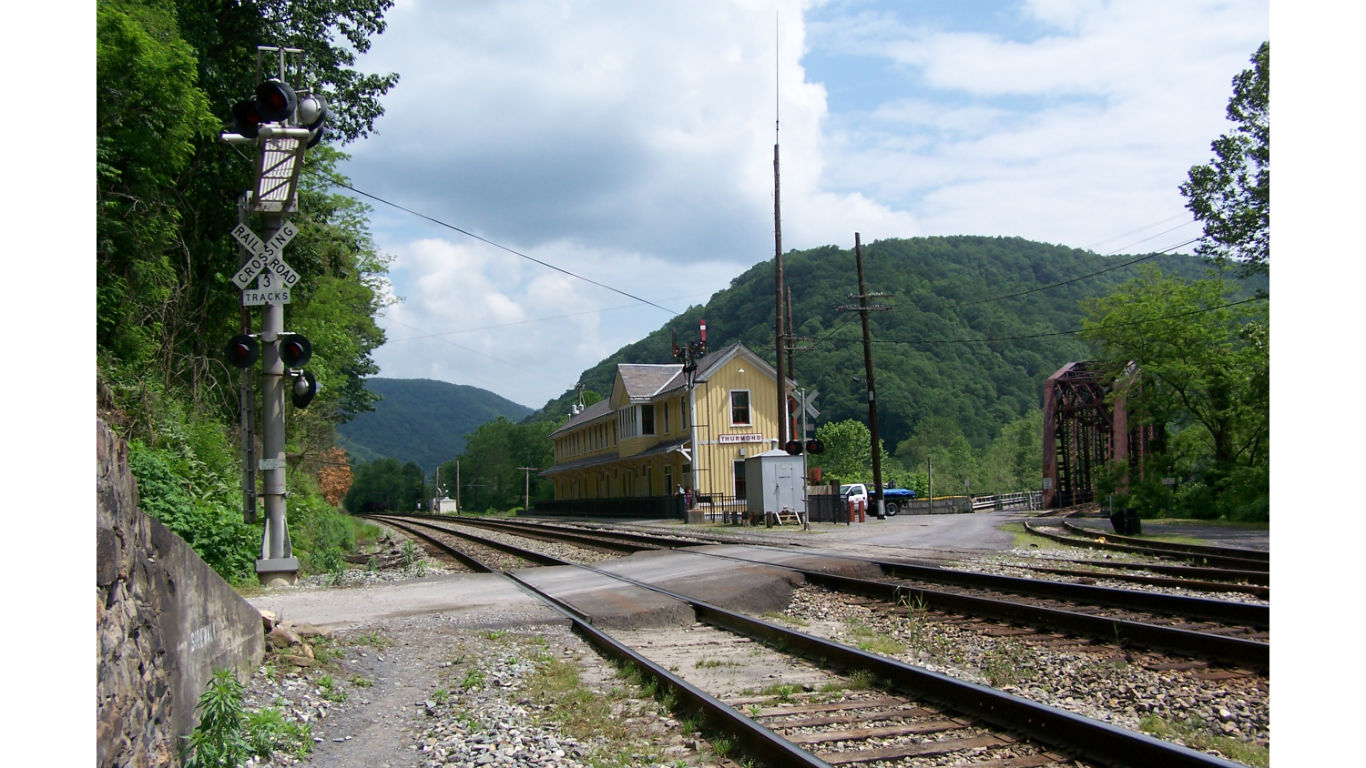
15. Thurmond, West Virginia
> Estimated population (2010): 5
> Estimated population (2000): 7
A former stop on the Chesapeake and Ohio Railway, Thurmond West Virginia was a bustling town during the height of coal mining in the New River Gorge. The town still retains many characteristics of a 1920s era Appalachian coal-mining village and is on the National Registry of Historic Places. Much of the remaining structures are now owned by the National Parks Service, and the town is still an active Amtrak stop on the Cardinal Line.
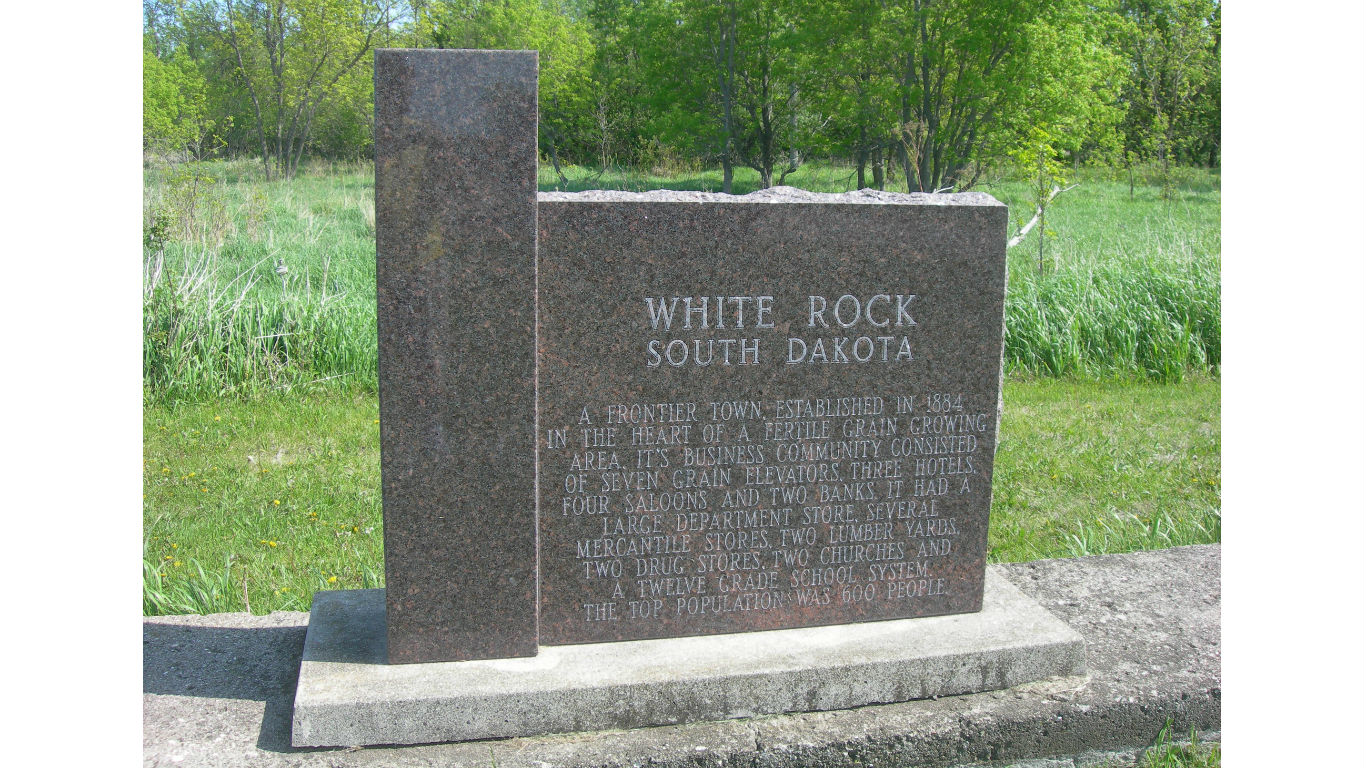
16. White Rock, South Dakota
> Estimated population (2010): 3
> Estimated population (2000): 18
The northeasternmost town in South Dakota, White Rock is a frontier town founded in 1884 in grain farming country. At its height it had 600 residents and multiple grain elevators, hotels, banks, lumber yards, and churches. The population began to decline in the 1920’s, reaching 113 in 1950 and 10 in 1980.
[in-text-ad]

17. Whites City CDP, New Mexico
> Estimated population (2010): 7
> Estimated population (2000): Not available
On the outskirts of Carlsbad Caverns National Park, Whites City serves as an outpost in the desert, providing a last stop for travelers before they drive the winding 13 mile road that leads to the park’s Visitor Center. Founded in the 1920s as a tourist outpost with a saloon, theater, and curios museum, the town is a ghost of what it once was, though it still has a functioning gas station, cafe, and an RV park.
The thought of burdening your family with a financial disaster is most Americans’ nightmare. However, recent studies show that over 100 million Americans still don’t have proper life insurance in the event they pass away.
Life insurance can bring peace of mind – ensuring your loved ones are safeguarded against unforeseen expenses and debts. With premiums often lower than expected and a variety of plans tailored to different life stages and health conditions, securing a policy is more accessible than ever.
A quick, no-obligation quote can provide valuable insight into what’s available and what might best suit your family’s needs. Life insurance is a simple step you can take today to help secure peace of mind for your loved ones tomorrow.
Click here to learn how to get a quote in just a few minutes.
Thank you for reading! Have some feedback for us?
Contact the 24/7 Wall St. editorial team.